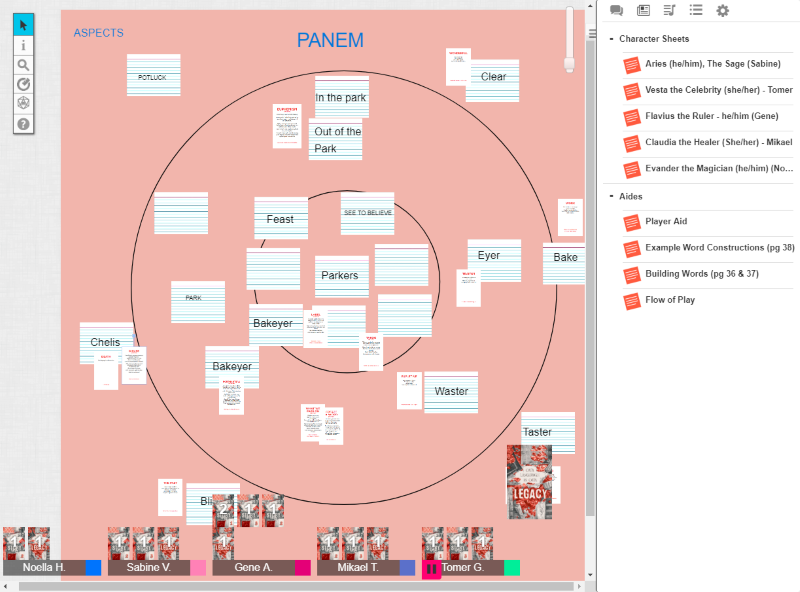I had a free day midweek, called a few folks over (Dave, Gene, Spencer), and we had an RPG night. We were all open to the “what”, and decided on two shorter games that could be played in sequence: Spencer’s own Icarus, and For The Queen.
Part One: Icarus, a game about collapse
Icarus is a storytelling game about the collapse of a great civilization. In some ways it shares some similar premise to Caroline Hobbs’ Downfall, which I’ve written about previously, but in most ways it is quite different. Part of the premise is that the civilization is also building a tower of some type, whether as a symbol of its achievement, or for some other greater purpose. And this tower is represented physically with a stack of dice that grows in the center of the table. Much like Dread, which uses a Jenga tower to provide tension in the horror RPG space, the dice tower also provides a level of mounting tension, as its collapse marks the downfall of the civilization.
Our civilization was close to falling… we made it 8 cubes high.
I’ve seen Spencer run the game at Strategicon Games on Demand and at our Story Games Glendale meetup, but I couldn’t join due to other game-running responsibilities.
As in many of these games, we could come up with our own scenario, but some initial ones are provided by the game, and we were opened to whichever one needed testing or sounded interesting. Spencer mentioned one called The Red Prometheus, which starts with “As the first major city on Mars…” If you know me, that’s all I need. I love any game set …IN SPACE!
The game comes with a number of small decks which provide story prompts and such. Some are used to help create our individual characters (Motive cards), and others are provided as prompts to determine the various strengths and weaknesses of the civilization. Much of the initial world building is collaborative, which I generally love, and worked very well in our game.
As the game progresses and things increasingly, and quickly, snowball into increasing amounts of desperation and chaos, many Aspects get put down on the table. These basically track difficulties that are present and get uncovered as the story progresses. The table takes on look of a mind map, intentionally. Keeping this as organized as possible is one part of the game that should not be ignored! It might be worth ensuring that the notes are clear and concise (similar to how you write cards in Microscope RPG, if playing with rules as written).
We had a really interesting story involving the martian colony propagating the myth that Earth was long dead, and various amounts of telepathy and mind communication, mixed in with lots of resources constraints, trade wars, and politics versus the free press. But as it happens in this game, the end is pre-determined: The civilization will fall. Story-wise, ours worked out to coincide with the Earth space corp invading our great city. In all, the game took just over 2 hours or so, which left us with enough time and energy for a second short game.
Tracking all the craziness… it’s a snowball affair.
Part Two: For the Martian Queen
The next game we decided to play was For the Queen. (I’ve written about this wonderful game in a separate blog post which is worth reading, if you haven’t already.) The wonderful part of this session was that Gene haphazardly suggested that we should run that in the same universe, and so we did exactly that: 100 years in the future, and a Martian queen from the scattered martian tribes heads to the Earth colony to broker a treaty.
I won’t go into the details of the game, but will say that it worked brilliantly as another way to play For the Queen: As a bit of world-building around an already existing campaign or game. We already had established fiction around mind reading and some other factors around our Mars world, and this just gave extra depth to our game and dynamics.
In fact, I found this so easy to tack on as a second game, that I did this again in another RPG session as a two-shot with two short games, a month later.







